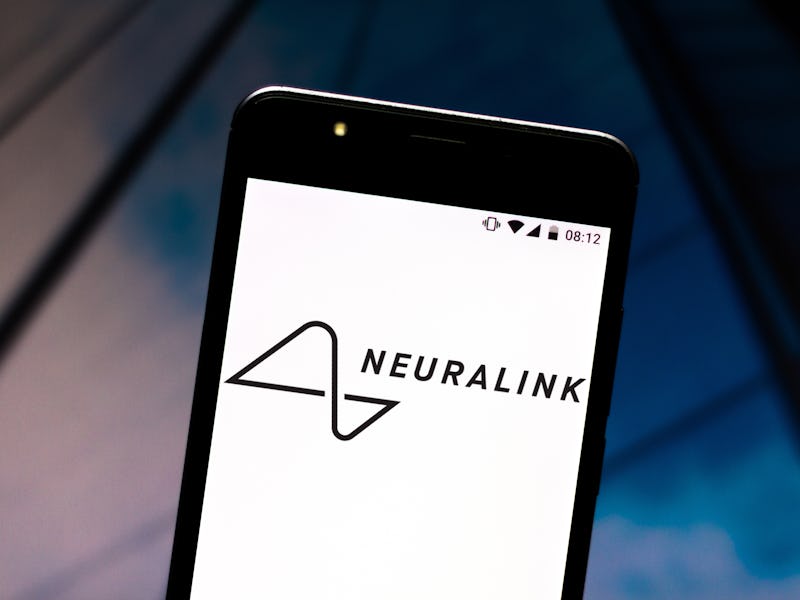Elon Musk's Neuralink: What you need to know about Friday's demo
On display: Pigs, robots, and grand promises of a revolution taking place in our heads.

On Friday, August 28, Elon Musk’s most secretive company emerged from stealth mode to make a rare update.
At the event, Neuralink, a four-year old medical company founded by the CEO of SpaceX and Tesla, offered some startling claims: Beyond healing debilitating tetraplegia and other brain condition, Musk also stated that the tech would one day enable us to rewind memories, or download them into robots.
Here's what you need to know about Friday's demo and all that Musk had on display.
What happened at Neuralink's event?
The main act of Neuralink’s Friday demo were four charming pigs. One was a control pig, another was a pig who had previously had a Neuralink implant inside their brain, another was one with a Neuralink inserted at the moment, and the fourth pig had two Neuralink inserts implanted.
These inserts, called Links, were 23 mm by 8 mm, or 0.9 inches wide by 0.3 inches tall — Musk compared them to “a large coin.” The Links connect to the brain via wires Musk described as “a few centimeters,” or around an inch and a half, away from the device itself.
A Link, held here by Musk. The metal square at the end of the wires is just meant to organize them for display purposes.
Version 0.9, as the model inside the pig named Gertrude is dubbed, also features a 6-axis inertial measurement unit to account for brain temperature, pressure on the device, and other logistical challenges posed to the Link.
Surgically implanted, Neuralink’s Links would have around a 12-hour charge, meaning they need to be charged wirelessly every night. At the demo, Musk compared charging a Link to charging a phone. He said to implant the device would take under an hour, and it would sit flush with the skull, so you wouldn't even notice it there.
The entire event, as seen from the livestream. Here, Musk was trying to goad Gertrude the pig out towards him.
The pigs, especially shy Gertrude, stole the show. Hearing Musk gently try to coax Gertrude out of a corner with the promise of snacks was a change of pace for the billionaire, whom many know best for his scorched-Earth fights on Twitter.
Did Neuralink show us anything new?
Musk showcased some notable improvements in Neuralink’s technology: The company has made the leap from headsets to chips inside the head.
Gertrude’s brain was the highlight of the event. On a screen, Musk showed viewers every firing event of the neurons inside her brain that connected to her snout. The neurons sent out neural spikes every time she snuffed a piece of hay, a human hand, or anything else.
Robotic chirps reminiscent of StarWars droid R2D2 ping as each neuron fired. Cute, and impressive, but it is not cutting edge technology: in 2019, for example, scientists at Yale did much the same in mouse brains, while also looking at the complexity of how different parts of the brain were reacting to their movements.
Gertrude and her brain on fully display, thanks to a Neuralink Link. This level of technology is commonplace at high-level universities.
The lack of innovation on display led the MIT Technology Review to dub the entire presentation “neuroscience theater.”
The future of Neuralink
If the chip on display Friday is the sum of Neuralink’s technological powers thus far, it shows progress, even if not cutting edge. And Musk has ambitious plans for its future capabilities. During the demo, the SpaceX CEO alluded to popular show Black Mirror, noting many of its predictions had come true, hinting at worlds of downloadable memory and robot surgery.
A telling moment came when a neuroscientist working with the company, Matthew MacDougall, said Neuralink was working towards small goals that could revolutionize the lives of those who suffer body immobility — the ability to type on a computer, for example. Unsatisfied, Musk went on to say that “I think long-term you can restore someone full body motion.”
Dorothy, whose Neuralink Link was removed. A perfect angel.
Such medical uses are somewhat tangential to Musk’s overall vision for the company, however. At one point in the demo, he said: “On a species level, it’s important to figure out how we coexist with advanced AI, achieving some AI symbiosis.”
But medical uses seem to be the best way to carry that vision forward, at least for now.
And it is well on its way to achieving that goal. Musk highlighted the company’s earning an FDA Breakthrough Device designation, which can expedite “the development, assessment, and review” of medical devices, although it does not mean FDA approval. Just as Musk has learned to live with the complex bureaucracies of NASA and the National Highway Traffic Safety Administration at SpaceX and Tesla, so Neuralink will face similar regulatory hurdles before it is cleared for use.
If Neuralink's claims hold true as it moves forward with its device, then the technology could be a boon for the treatment of neurodegeneration and motor impairment. But first it will have to live up to its showman CEO's standards, and there’s no telling if even Gertrude can do that.